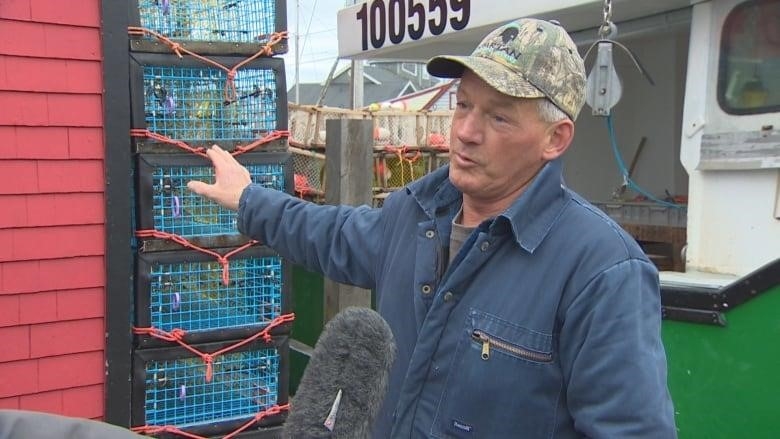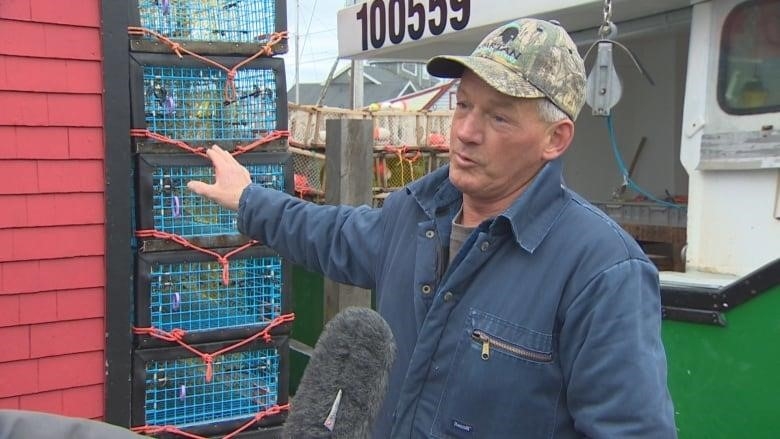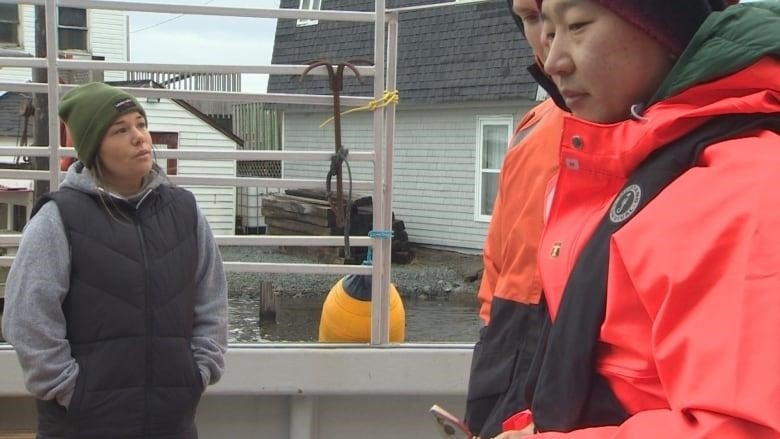
A system that uses tags to help find and get back lost equipmen
A new company in Halifax is testing out new technology that could help the fishing industry find lost lobster traps and other dangerous fishing gear.
The company Marine Thinking has started a pilot project in which high-tech devices are put on the traps. The tags send signals to consoles on fishing boats that are designed to receive them. This lets the crew keep track of where their equipment is using their phones or other devices.
A product director at the company, Yuan Yao, said, “Almost every fisherman loses traps during their season, so there is a big economic driver behind it.” “So you can figure out who they are and get them back, so you don’t lose them.”
The project will get $250,000 from Fisheries and Oceans Canada’s “ghost-gear” fund, which helps projects that deal with lost or discarded fishing gear.
The department says that between 600,000 and 800,000 metric tonnes of ghost gear are thought to end up in the world’s oceans every year. Last year, a non-profit group called Coastal Action found and picked up more than 32 tons of lost gear on Nova Scotia’s beaches and in its waters.
When lobster traps and other fishing gear get lost in the ocean, “it attracts more fish into it and they can’t get out, and it attracts more, and it creates this terrible situation,” Yao said, adding that ropes and other gear can be dangerous for whales.
Financial incentiv
This season, three lobster fishermen are using the company’s gear to test it. One of them is Jamie Osborne, who is 63 years old and lives in Eastern Passage, N.S. He has been fishing for lobster for 40 years.
The money he loses when he loses traps is a big reason why he is interested in the technology.
“Well, if it will help me find my gear—they’re expensive to buy, like $300 a trap—then I’m all for it,” he said.

Osborne also makes his own wooden traps, but the materials for them still cost around $60.
“I’ve lost as many as 12 or 15 times in a season, but last season was good. I think I only lost five, “he said. “When other fishing boats run over the line or the buoy, it gets wrapped around their propeller and cuts it off. You can’t get it. So that’s how we lose almost all of them.”
Fisheries and Oceans Canada needs to be told about any lost gear, which gives the crew more work to do.
Hopes for sustainabilit
Ashley, Osborne’s daughter, has been fishing with him for 12 years. She wants to see any new technology that can help keep the fishing industry going.
“I want to keep fishing, and maybe so will my kids. All of this changes it. Small lobsters can get in by crawling in. They’ll never get big, so if they’re at the bottom, they’re stuck there and no one knows about it “she told me.

At the moment, fishing crews mark where their gear is on GPS systems, but Yao said that these systems don’t always work well.
“When you put a trap in the water, the GPS keeps track of where it is. But when a storm situation happens, that trap got moved away so you wouldn’t know exactly where it is anymore,” he said.
The tagging devices will be able to tell retrieval companies where the gear is, so they can send down divers or remote-controlled underwater vehicles to help get it back.
The system also automatically digitizes the location data, so fishing crews no longer have to write down GPS locations by hand.
The company says it hopes to sell the tags for around $40 so that the system stays affordable.
It is also looking into the possibility of adding more data to the devices, like the temperature of the ocean or the exact locations of a crew’s best fishing spots.
Next season, the company plans to add 25 more fishing crews to the pilot project.
MORE TOP STORIES
